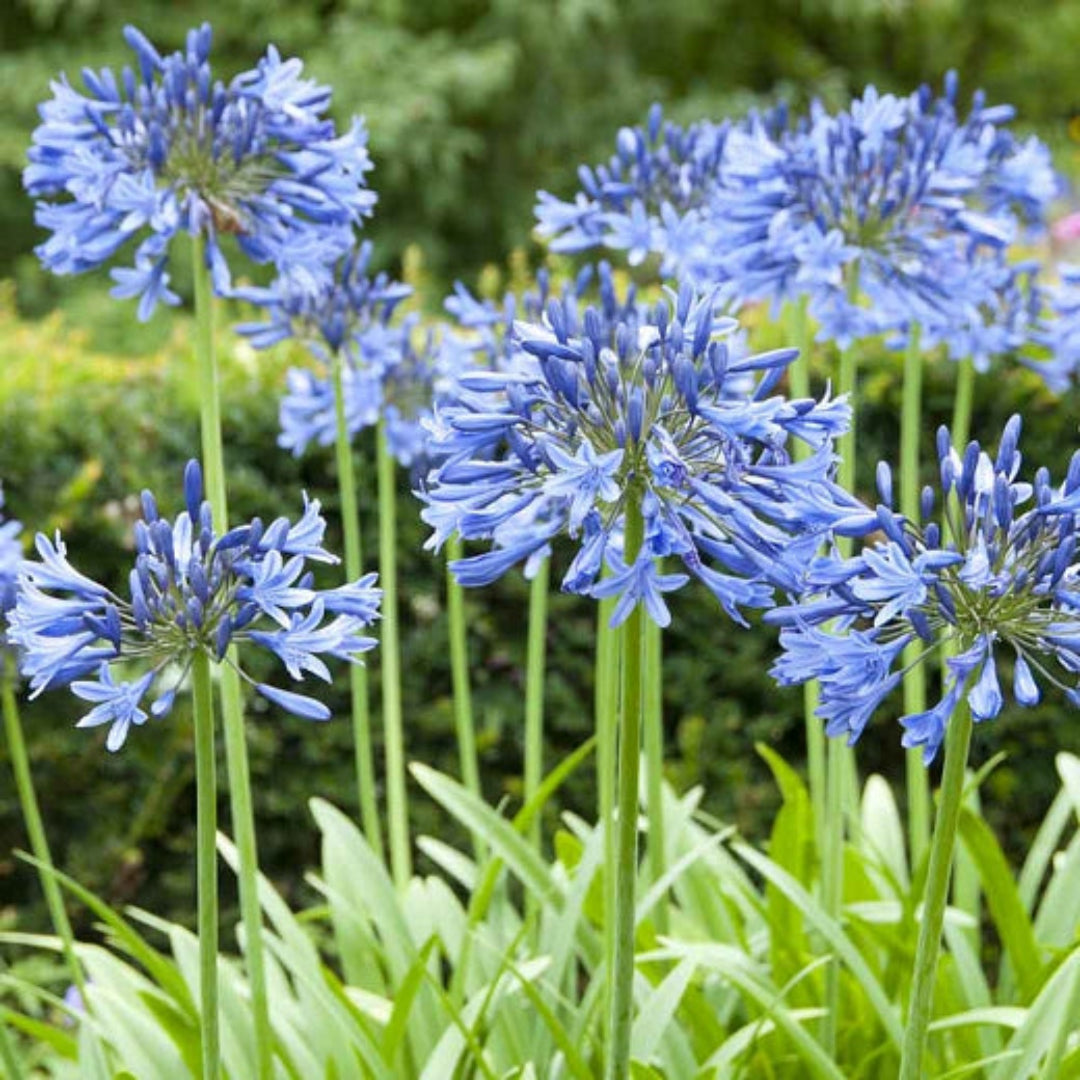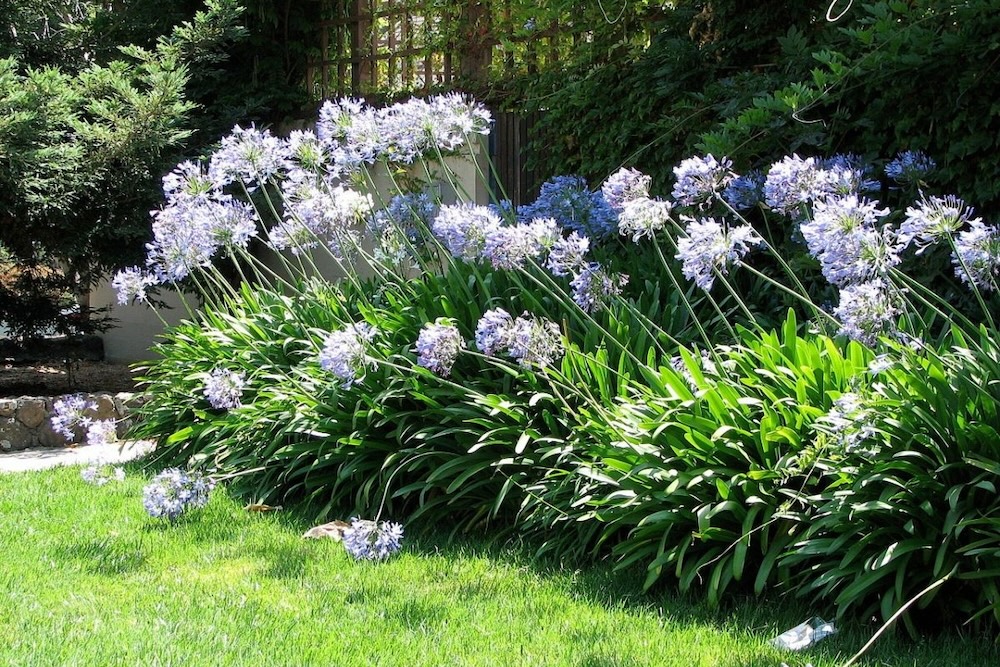Typical Agapanthus Issues and How to Solve Them
Typical Agapanthus Issues and How to Solve Them
Blog Article
Letting Loose the Secret to Successful Agapanthus Growing: Advice for a Flourishing Yard
In the realm of gardening, growing agapanthus successfully needs a critical approach that includes various elements of plant treatment. By understanding the subtleties of agapanthus farming, one can create an atmosphere where these plants thrive and flower abundantly.
Planting Agapanthus: Finest Practices
When planting Agapanthus, proper dirt prep work is essential for making certain successful development and development of these stunning flowers. Agapanthus, frequently called Lily of the Nile or African lily, grows in well-draining soil with a somewhat acidic to neutral pH level - Agapanthus. Prior to growing, it is important to modify hefty clay soils with natural matter such as garden compost or peat moss to improve water drainage and provide vital nutrients for the plants
To plant Agapanthus, select a location that receives full sunshine to partial color, as this will promote healthy development and abundant flowering. Dig an opening two times the size of the plant's root sphere and place the Agapanthus at the exact same deepness it was previously growing. Carefully backfill the opening with dirt, pressing down strongly to remove any type of air pockets around the origins.
Water the newly planted Agapanthus completely and remain to maintain the dirt uniformly wet, especially during the plant's energetic expanding period. Agapanthus. Applying a balanced fertilizer once a month can additionally sustain the plant's development and blooming. By adhering to these finest practices for growing Agapanthus, you can produce a stunning display screen of these exciting blossoms in your yard
Perfect Dirt Conditions for Agapanthus
For ideal growth and flowering success of Agapanthus plants, making sure the soil problems are suitable is vital. Agapanthus thrives in well-draining soil with a slightly acidic to neutral pH level ranging from 6.0 to 7.0. This sort of soil enables ample water drain, preventing waterlogging which can lead to root rot. To boost soil drain, take into consideration including natural issue such as garden compost or peat moss when preparing the planting site. Additionally, Agapanthus favors dirt that is abundant in nutrients, so including a well balanced plant food during the growing season can promote healthy and balanced development and lively flowers.

Watering and Feeding Tips
To make certain healthy and balanced development and lively flowers, appropriate watering and fertilizing strategies are necessary for successful Agapanthus farming. Agapanthus plants profit from routine watering, particularly during the expanding period.
When it concerns fertilizing visit this website Agapanthus, a balanced fertilizer with equivalent components nitrogen, phosphorus, and potassium can be used in the spring to advertise healthy and balanced development and flowering. Slow-release plant foods are suitable for supplying nutrients gradually over an extensive period. Stay clear of over-fertilizing, as this can cause extreme foliage growth at the expenditure of flowers.
Additionally, including raw material like garden compost into the dirt can improve nutrient levels and enhance dirt structure, assisting in the overall health and wellness of the Agapanthus plants. By complying with these watering and feeding ideas, gardeners can guarantee their Agapanthus plants flourish and generate spectacular displays of flowers.
Trimming and Deadheading Techniques
Correct pruning and deadheading strategies play an important role in preserving the wellness and appearances of Agapanthus plants, matching the important methods of watering and feeding for successful growing. Trimming Agapanthus entails eliminating invested flower heads, dead or yellowing fallen leaves, and overall shaping of the plant to advertise better growth. Deadheading, the procedure of getting rid of faded blossoms, not just enhances the plant's appearance yet also urges further flowering.
When deadheading Agapanthus, it is suggested to snip off the flower stem at the base making use of sharp, clean shears. This process redirects the plant's power from seed manufacturing back into origin and vegetation development, advertising a healthier and much more durable plant. Normal deadheading can extend the blooming period of Agapanthus and stop self-seeding, which can bring about congestion.
In terms of pruning, Agapanthus typically take advantage of a light trim after flowering to clean the plant and urge fresh development. Reducing the invested blossom stems and eliminating any type of dead or broken foliage assists keep the plant's vigor and general appearance. However, it is necessary to stay clear of reducing into the crown of the plant, as this can compromise its health.

Protecting Agapanthus From Pests and Diseases
Implementing effective bug and condition management techniques is important to guarding the health and wellness and vigor of Agapanthus plants in cultivation. One typical pest that impacts Agapanthus is the Agapanthus borer, a caterpillar that passages into the plant, triggering damages to the leaves and flowers.
In enhancement to pests, Agapanthus are prone to illness Your Domain Name such as origin rot and fungal fallen leave spots. These problems can typically be stopped by ensuring appropriate water drainage and staying clear of overwatering. Influenced parts of the plant should be quickly gotten rid of to prevent additional spread if indications of condition show up. Fungicides might also be utilized as a treatment step, complying with the supplier's guidelines carefully. By staying watchful and attending to bug and condition issues immediately, garden enthusiasts can aid their Agapanthus grow and prosper.

Verdict
In article source verdict, effective growing of agapanthus calls for proper growing techniques, suitable soil conditions, ample watering and feeding, routine trimming and deadheading, and protection from diseases and bugs. By adhering to these suggestions and techniques, garden enthusiasts can ensure a growing yard filled with attractive agapanthus blooms. Agapanthus. Keep in mind to preserve constant treatment and attention to detail to promote the health and wellness and long life of these stunning plants
When planting Agapanthus, appropriate soil prep work is necessary for ensuring successful growth and advancement of these stunning blossoms.Water the freshly grown Agapanthus thoroughly and continue to keep the soil uniformly damp, specifically throughout the plant's energetic expanding period.For ideal development and flowering success of Agapanthus plants, making certain the dirt problems are excellent is crucial. When planting or transplanting Agapanthus, make certain the dirt is well-prepared to supply the needed foundation for the plants to establish themselves successfully. One typical bug that affects Agapanthus is the Agapanthus borer, a caterpillar that tunnels right into the plant, triggering damage to the leaves and flowers.
Report this page